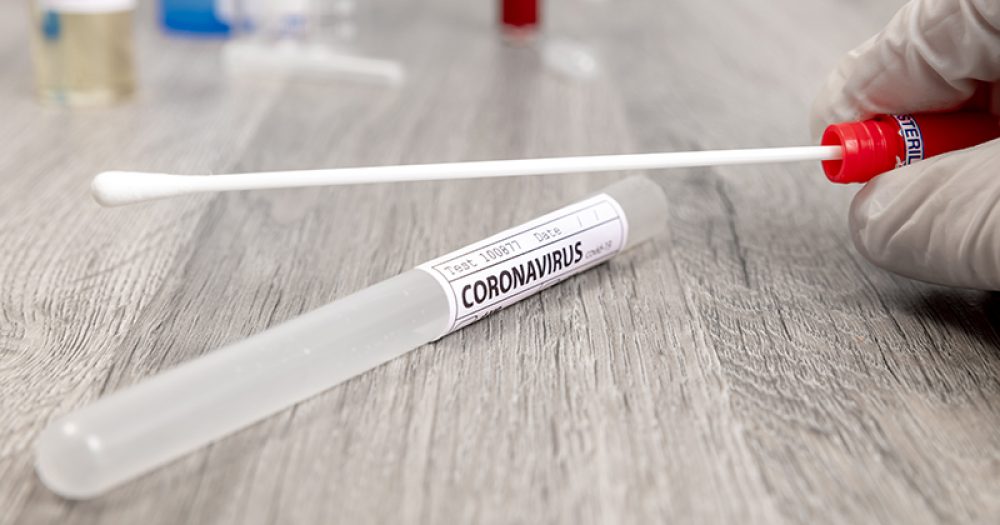Over the past few weeks, three of our schools, all hard-hit by covid-related absence in the autumn term, participated in a pilot to administer rapid lateral flow tests to pupils and staff. We set up at short notice, with little initial guidance, and it was logistically demanding work. Here’s what we learned…
1. Use exam invigilators and admin staff for Covid teams
You will need a dedicated Covid-19 testing team, none of whom need clinical experience.
A senior leader – likely the school business manager – should be designated as the Covid-19 coordinator and quality lead. They will ensure that all aspects of the testing process are completed adequately. They will check that systems are in place for securing consent, resourcing and administering the test and making the best use of time and space. They will also lead the response to any positive cases identified by the testing and address any concerns.
Their team comprises a registration assistant, a testing assistant for each testing bay, several results processors to analyse the tests and a results recorder. A cleaner will be needed to disinfect surfaces and discard waste appropriately.
School staff such as exam invigilators, administrative personnel and cleaners could be considered to join the testing team – they are already vetted, inducted in all school systems and familiar with your staff, pupils and management systems. If you need further recruits, there may be willing volunteers among your alumni, PTA and governors.
2. Location, location, location
You do not need a laboratory – but you do need adequate space. A school hall is ideal. The testing base needs to be arranged into zones for registration; swab testing; test processing; results recording and storage of unused test kits and PPE items. You will also need to accommodate close contacts whilst they await their test results.
Ideally the testing base should be accessible from classrooms for routine testing and near to a school entrance so that close contacts can be tested each morning without walking through the building.
Adequate distance is needed between each of the bays and to allow all parts of the testing process to be accommodated safely. You will need sufficient space to create a one-way system within and around the testing base.
3. Resourcing for success
Envisage the process from end to end. You will need to provide some basic resources for the smooth administration of the programme. Chairs and tables will be needed in the registration, testing and processing areas.
In addition, you will need bins for the disposal of clinical waste, a stock of bin liners and cleaning materials to wipe down and disinfect surfaces. Hand sanitisers will be required for all participants. A laptop with access to school drives will be needed for registration and for the recording of test results. The DfE will provide full testing kits, template spreadsheets for recording results and PPE for test administrators.
4. One TA per testing bay, and just one lesson disrupted
A well-planned schedule reduces disruption to learning. It takes around 30 minutes to set up your base (something which is best done the day before testing starts) and you should be able to complete at least 15 tests per hour for every bay you establish. Each bay needs a testing assistant. A processor is needed for every two bays.
Imagine a school with 150 pupils in each year group and 150 staff. Assume two thirds of the population consent to testing. This would entail testing 100 pupils in each year group and around 100 staff.
A school with six bays can undertake around 100 tests an hour and could have a schedule for mass testing that is similar to this:
| Time | Group |
| 8.00am till 9.00am | Year 7 |
| 9.00am till 10.00am | Year 8 |
| 10.00am till 10.15am | Break |
| 10.15am till 11.15am | Year 9 |
| 11.15am till 12.15pm | Year 10 |
| 12.15pm till 12.45pm | Lunch |
| 12.45pm ill 1.45pm | Year 11 |
| 1.45pm till 2.30pm | Overflow |
| 2.30pm till 3.00pm | Clean-Up |
| Ongoing | Staff |
Timings should be such that only one lesson is disrupted for each year group. Good communication between the testing team and teachers in classrooms will help to manage the movement of pupils to and from the base.
Where pupils have been identified as close contacts, they will need to be tested daily before they circulate in the main school. Ask these pupils to arrive before the school day starts in order that they can be tested and receive their results before the first lesson of the day.
Weekly routine testing of staff can be done before or after school, or on an appointment system during the day.
The DfE is producing a workforce planner to assist school leaders with logistical planning.
5. Safety first, but remember it’s asymptomatic testing
It’s vital that all aspects of safety and wellbeing are considered. All staff should wear personal protective equipment (PPE) and the testing assistants should wear two sets of gloves – with the external ones removed after each used test kit is handled.
Everyone – including the pupils and staff to be tested – should maintain distancing and wear a face covering (removing it only momentarily when swabbing).
The Covid testing team will need time between each test to discard waste. Bins should be provided near to each bay and emptied regularly in a safe and secure manner. Each bay needs cleaning between users.
Staff within the testing team will also need regular breaks to support their welfare and to minimise the risk of error.
As this is asymptomatic testing, protective screens around bays are not required. Members of the testing team need to maintain distance, but PPE does not need to be changed after every test.
6. Practice makes perfect
By having clearly defined roles for each member of the team, and repeatedly practising the testing process in situ, routines will be established quickly. The DfE is producing a compulsory training webinar that takes staff through the processes to be followed from their role perspectives.
The process is simple. A pupil arrives at the base and their consent is checked by the registration assistant. A barcode is scanned against their name and passed to them to stick to their test. They move to the first available bay and are instructed by a testing assistant on how to unpack the testing kit in front of them and swab themselves (down the throat and up a nostril).
The swab is placed in a vial (that already contains the test solution) and the results processor then uses the testing kit to confirm the outcome. Two lines indicate that the subject has tested positive and a single line shows they are negative. The results recorder uses a spreadsheet to record the outcome of each test. The cleaner or test assistant disinfects the bay allowing the next person to get tested.
Each test takes 90 seconds to administer and results are available after 30 minutes.
7. Communicate with confidence
For the testing programme to work, it is important that you make time to talk to parents, teachers and young people.
Using the template provided by the DfE – draft letters to parents and staff. An online meeting with parents will also help to address queries and allay concerns. Demonstrate how easy and comfortable it is to administer a test.
As the testing programme rolls out, let all parents know how it has gone and how they can still join.
Secure informed consent. No parent, young person or member of staff should feel coerced. However, it is important to be enthusiastic about the value and efficacy of your testing programme – and senior leaders should be prepared to sign up to participate in the testing to provide reassurance to others.
Ensure that the parent of every pupil tested is sent a text message confirming a negative test result within a short time. If they test positive, have a clear plan for a senior leader to contact parents and talk through the next stage.
As numbers being tested grow each week, be ready to scale up. Mass testing will be the most resource-intensive phase. Once this is completed, the demands on time and staffing will lessen as routine and serial testing become embedded.
You aren’t on your own: help and advice will be available. The pilot programme received excellent input from armed forces personnel. Discussions are taking place between local authorities and the British Army regarding the January roll-out and how best it can be supported.
As part of your suite of measures to provide a safe environment for continued teaching and learning, this programme has great potential to build confidence through certainty.








I think staff have gone above & beyond enough. Even before the virus, their schedules were demanding & to assume that all schools would want this isn’t ideal.
I have 4 children aged between 28 & 13 & have never allowed my children to part of any medical exams/censors at school, feeling that at that point, they are merely a statistic & if they were to need any medical support, that was & still is my role. I wouldn’t be comfortable allowing anyone administer any testing without my presence.
I would therefore refuse consent to this.